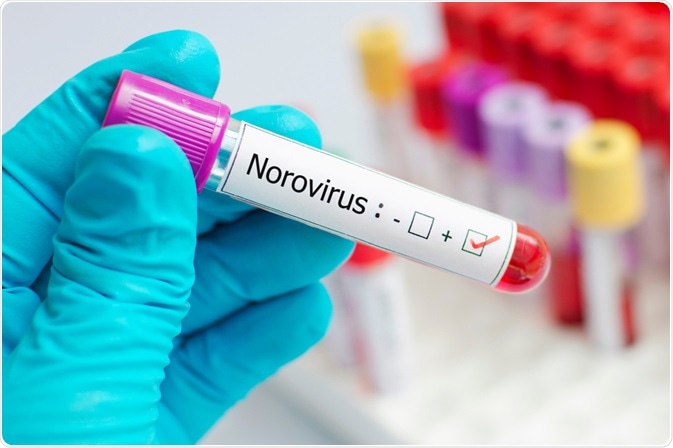Noroviruses belong to a genus of genetically diverse viruses within the Caliciviridae family, which are responsible for acute gastroenteritis in humans and animals. As a viral culture system is not available, the genetic analysis represents the principal method to classify norovirus strains. These viruses can be subdivided into genogroups, each of which is further segregated into genotypes.

Image Credit: Jarun Ontakrai / Shutterstock.com
The lack of an internationally approved standard for norovirus nomenclature and definition of genotypes has resulted in some conflicting reports in the medical literature. As the global distribution of these agents is becoming increasingly important, it is pivotal to establish a standardized nomenclature in order to adequately address epidemiologically important lineages.
Principles of classification
Historically, the classification of noroviruses was based on cross-challenge research studies in volunteers and cross-reactivity analyses by immune electron microscopy. Such antigenic classification schemes did not exhibit adequate accuracy and reproducibility, which were attributed to the cross-reactivity of antibodies.
Today the classification is most commonly based on the nucleotide sequence of the open reading frame 2 (ORF2), which encodes the major structural capsid protein. These sequences can be subdivided into six genogroups (GI-GVI), consisting of at least 32 genetic clusters or genotypes. There are 8 genotypes in GI genogroup, 17 genotypes in GII genogroup, 2 genotypes in GIII genogroup, and one genotype for each of the other three genogroups.
Most noroviruses affecting humans belong to GI or GII, which are the genogroups with the largest genetic diversity. GIV can be also found in humans, while GIII and GV strains are found in cows and mice, respectively. Canine norovirus is a recently discovered pathogen in dogs, with strains classified into genogroups IV and VI.
Correct classification is important, particularly for noroviruses belonging to genogroup II, genotype 4 (GII.4), due to the emergence of new pandemic GII.4 variants. Molecular epidemiologic studies have found that 70% of norovirus outbreaks are caused by this variant genotype. GII.4 strains frequently undergo genetic changes, which leads these transformed forms to sometimes be referred to as "variants" or "subtypes."
Unified norovirus nomenclature
Cryptograms for noroviruses, which are akin to the influenza classification system, would undoubtedly facilitate communication by inclusion of the genogroup, genotype, and variant assignment. The strain name should include the organism (norovirus GI-VI), host (human, porcine, bovine, etc.), country code (ISO), year of sampling, genogroup, genotype, and variant name (city, if necessary, followed by a serial number).
Some examples include norovirus GII/Hu/US/2010/GII.P12-GII.12/HS206norovirus and norovirus GII/Hu/GB/2010/GII.P4_GII.4_NewOrleans2009/London48. If only the capsid sequence is known, the virus can be identified as norovirus GI/Hu/AU/2012/GII.4 Sydney/Melbourne456.
The vast diversity of strains is ascribed both to the accumulation of point mutations associated with error-prone ribonucleic acid (RNA) replication and the recombination between two related viruses. Recombination of noroviruses in the ORF1-ORF2 junction region is a frequent event, with some genotypes appearing to be more susceptible to recombination than others. Thus, the nomenclature of new norovirus genotypes and variants should be coordinated through international norovirus working groups.
References
Further Reading